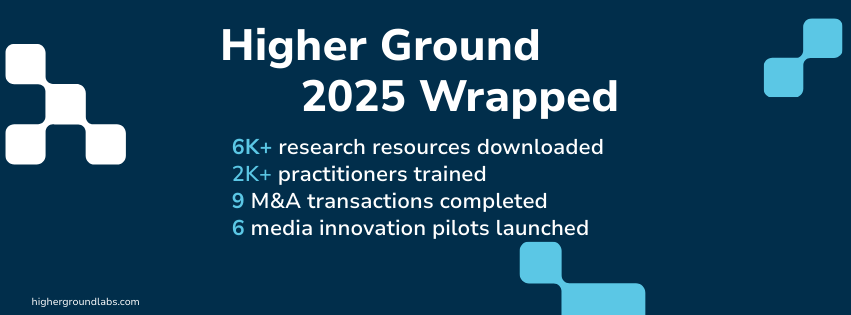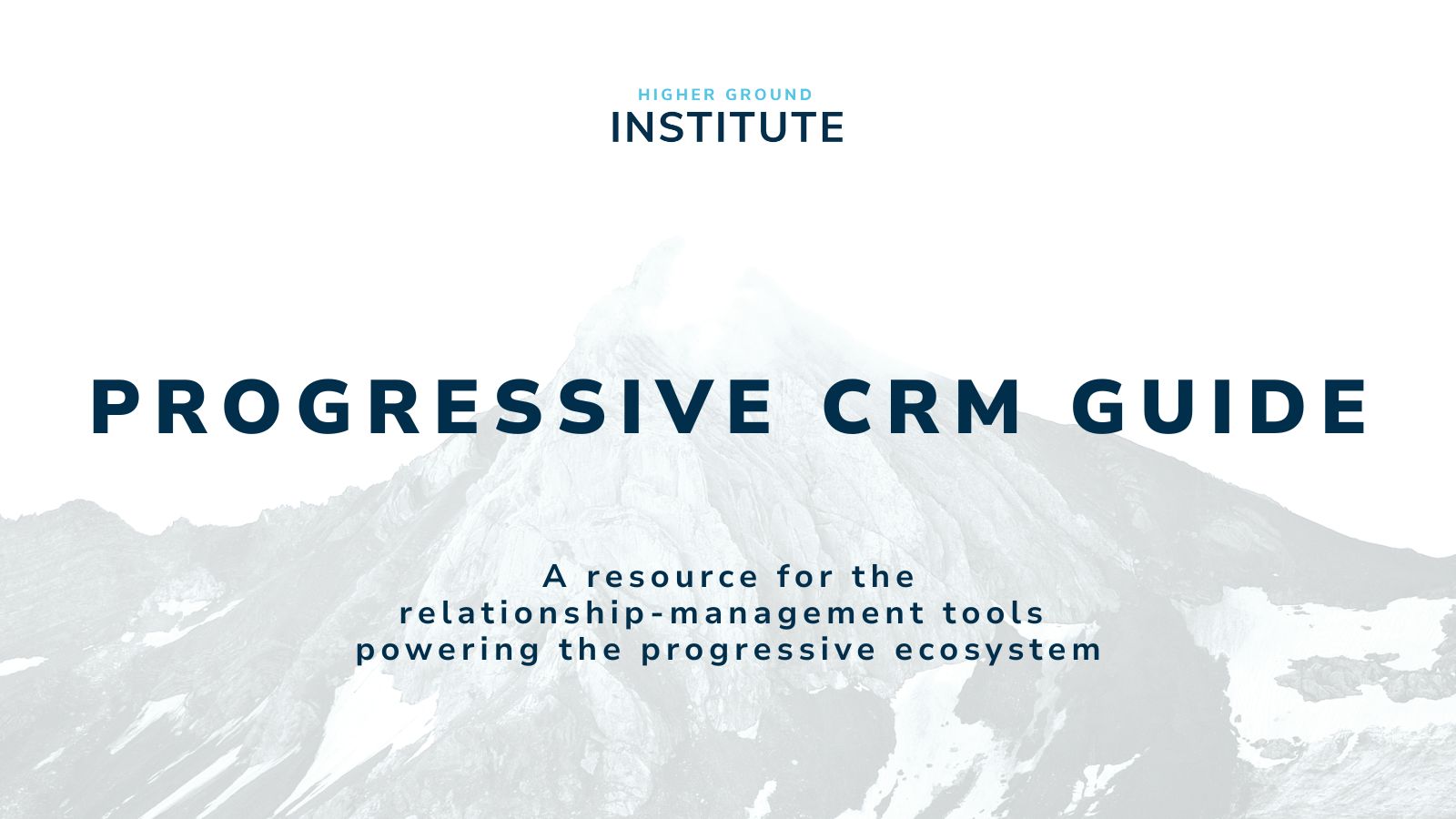The Higher Ground Institute’s Salon Series curates intimate, off-the-record conversations to explore the most urgent strategic questions facing campaigns and advocacy organizations today. These strategy sessions are designed to break down silos, spark collaboration, and surface experiments worth pursuing.
Our most recent HGI Salon brought together practitioners working at the intersection of media, data, and political strategy. Hosted by HGI Media Innovation Fellow, Andrew Markoff, this conversation focused on how campaigns and advocacy groups can better understand media consumption, measure advertising effectiveness, and adapt strategies in a rapidly shifting media landscape.
The conversation surfaced both persistent challenges and emerging opportunities for innovation. Here are three key takeaways:
1. Measurement Still Lags Behind Reality
A clear theme during the Salon discussion emerged: the way campaigns measure media consumption simply hasn’t kept pace with how voters actually engage with content today.
Most campaigns still rely on public or semi-public data sets that track broad media trends. While these can offer general direction, they’re built around the behaviors of all Americans. They miss the nuances of the voters campaigns most urgently need to persuade. Some more advanced operations run custom media surveys, which are accessible and quick to deploy. But even those fall short in capturing today’s messy reality, where voters constantly move across platforms, toggle between ad-free and ad-supported environments, and behave differently based on their identities and contexts. Surveys alone can’t map that complexity.
It means that campaigns are left with incomplete data and an inability to make apples-to-apples comparisons between media channels like TV, digital, influencer, and emerging formats. The stakes are high and the guesswork is costly.
Participants underscored that solving this isn’t just a technical lift—it’s a political one. Downballot campaigns in particular often lack both the budget and the incentives to build or pay for sophisticated measurement tools. And without better data, spending decisions are often driven more by instinct than insight.
While there have been many efforts to fill this gap, the call was clear: campaigns continue to need shared, scalable tools that go beyond static surveys. Models must integrate behavioral evidence to reflect the real-world fluidity of media consumption and deliver insights that are both reliable and actionable.
Many at the Salon agreed that a hybrid approach—combining survey data, behavioral modeling, qualitative research, and first-party analytics (when available)—could offer a far more strategic view of the audience landscape, but building this measurement infrastructure will require continued collaboration, innovation, and investment at scale.
2. Beyond Micro-Targeting: The Case for Prioritizing Broad Reach
A second key theme was the growing recognition that micro-targeting has been oversold as a cure-all for campaign outreach.
Digital platforms promise precision, but in practice, limitations in targeting capabilities make it difficult to reliably reach the voters campaigns care about most. Many campaigns find themselves chasing increasingly narrow audience segments while missing opportunities to engage broader swaths of the electorate with compelling creative. Many crucial audiences are now converging on digital media and high-viewership live events like sports. Broader (and more expensive) ad buying may give us more return on investment than micro-targeting.
This approach is especially important for downballot races with smaller budgets, where trying to buy hyper-specific targeting often wastes resources. The path forward may lie in reframing digital tools as amplifiers of broad strategies, rather than vehicles for pinpoint precision.
Of course, this all stems from an understanding of our voter audiences. Different groups, and even different individuals, are reachable through different media. We need to understand how these voters consume media and which opportunities we have to put ads in their path of consumption. The idea that hyper-targeted digital can reach everyone efficiently is increasingly tenuous.
3. New Frontiers: Influencer and Creator Campaigns
The third major theme centered on a fast-evolving and increasingly indispensable tool in the campaign media toolkit: influencer and creator partnerships.
Unlike traditional paid ads, influencer and creator content carries a sense of authenticity and peer-to-peer credibility. However, measuring its reach and effectiveness remains an unresolved challenge. Treating influencer efforts as just another impression risks undervaluing their impact, while ignoring them altogether misses their growing importance. Participants agreed that these programs can and must be measured alongside earned and paid media, while understanding that their unique value lies in trust, resonance, and the ripple effects of authentic engagement.
There are existing and developing tools that can help campaigns measure the full gamut of their media strategy, from paid to creators. But making these tools accessible beyond presidential or well-funded statewide campaigns is critical. For many local and downballot races, influencer campaigns could be one of the most effective ways to connect with communities, but without measurement, it will be hard to make the case. Developing frameworks that can measure impact without undermining authenticity, and building systems that campaigns of all sizes can use, will be essential.

A Call to Action
If campaigns are to keep pace with the realities of today’s media environment, they must treat experimentation as essential infrastructure, not an afterthought. Access to better measurement tools, supporting shared repositories of research, and making innovation accessible beyond top-tier races will require new funding commitments and collective will.
The future of campaign media strategy depends on whether we can measure honestly, innovate responsibly, and share openly—ensuring that every campaign, no matter its size, can connect with voters effectively. As the rules of media consumption change rapidly, every campaign should be able to easily and accurately leverage data to determine how best to spend their ad dollars.
Andrew Markoff’s project, M3 Media, is building a first-of-its-kind media planning platform designed to help campaigns of all sizes make smarter, data-driven spending decisions.



